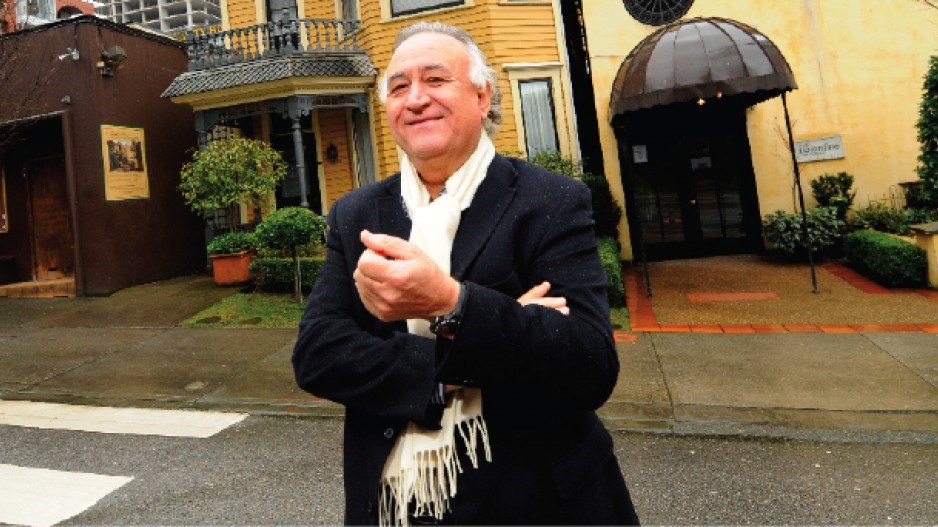On the menu
Grosvenor Properties is cooking up a new plan for the site of Umberto Menghi’s fabled Il Giardino restaurant at the south end of Hornby Street.
Grosvenor purchased the property last year from Seacliff Properties Ltd., which had acquired it and a handful of adjacent parcels from W.P.J. McCarthy and Co. in January 2013.
Demolition fences now surround the property and the former Tony Roma’s premises on Pacific Boulevard, which will become a park while Grosvenor consults the community regarding the site’s future.
Menghi originally hoped to develop an 18-storey boutique hotel on the site, preserving the landmark yellow Leslie House, built in 1888, for the hotel’s entrance. But towering costs nixed the plans, and the assembly acquired by Seacliff required another rezoning.
Now, the rezoning falls to Grosvenor, which intends to incorporate Leslie House within its development plans. Those plans will be discussed with the community, with updates on the project posted online at grosvenorpacific.com.
On par
Chatter over vacant homes and absentee property owners is again at fever pitch in Vancouver, with the city announcing plans to commission a study of the city’s vacant housing units.
The question of vacant homes and absentee property owners regularly arose during candidates’ meetings during last fall’s municipal election campaign, with Coalition of Progressive Electors mayoral candidate Meena Wong going so far as to suggest levying higher taxes on vacant homes.
“Homelessness is at its highest level in recorded history. Meanwhile, houses sit empty across the city,” Wong said.
But federal census data indicates that vacant homes, or those occupied by foreign or temporary residents, represented just 7.7% of the city’s housing stock in 2011. The census pegs the proportion of vacant homes at 6.3% of the total.
While Surrey has a lower percentage of its stock vacant or occupied by foreign and temporary residents, a slightly greater proportion of its units is vacant – 6.5%.
And when it comes to detached dwellings, Vancouver and Surrey are neck and neck at 3.5% and 3.7%, respectively.
The proportion of dwellings vacant or occupied by temporary or foreign residents in other communities around the province also tends to cast Vancouver and Surrey in a favourable light; in Tofino, the 2011 rate was 25.9%, while in Kitimat it was 15.2%. Kelowna reported 9.3%, while the natural gas hub Fort St. John checked in at 9.2%.
The numbers are compelling enough that the BC Real Estate Association will analyze them later this year for insights on what dynamics are at play.
“It sounds like the west side of Vancouver has all these vacant houses and nobody else does, but when you look at the numbers, they’re really not a lot different,” said Cameron Muir, the association’s chief economist. “It doesn’t give us any idea that there’s some sort of discrepancy in Vancouver compared to other areas.”•




